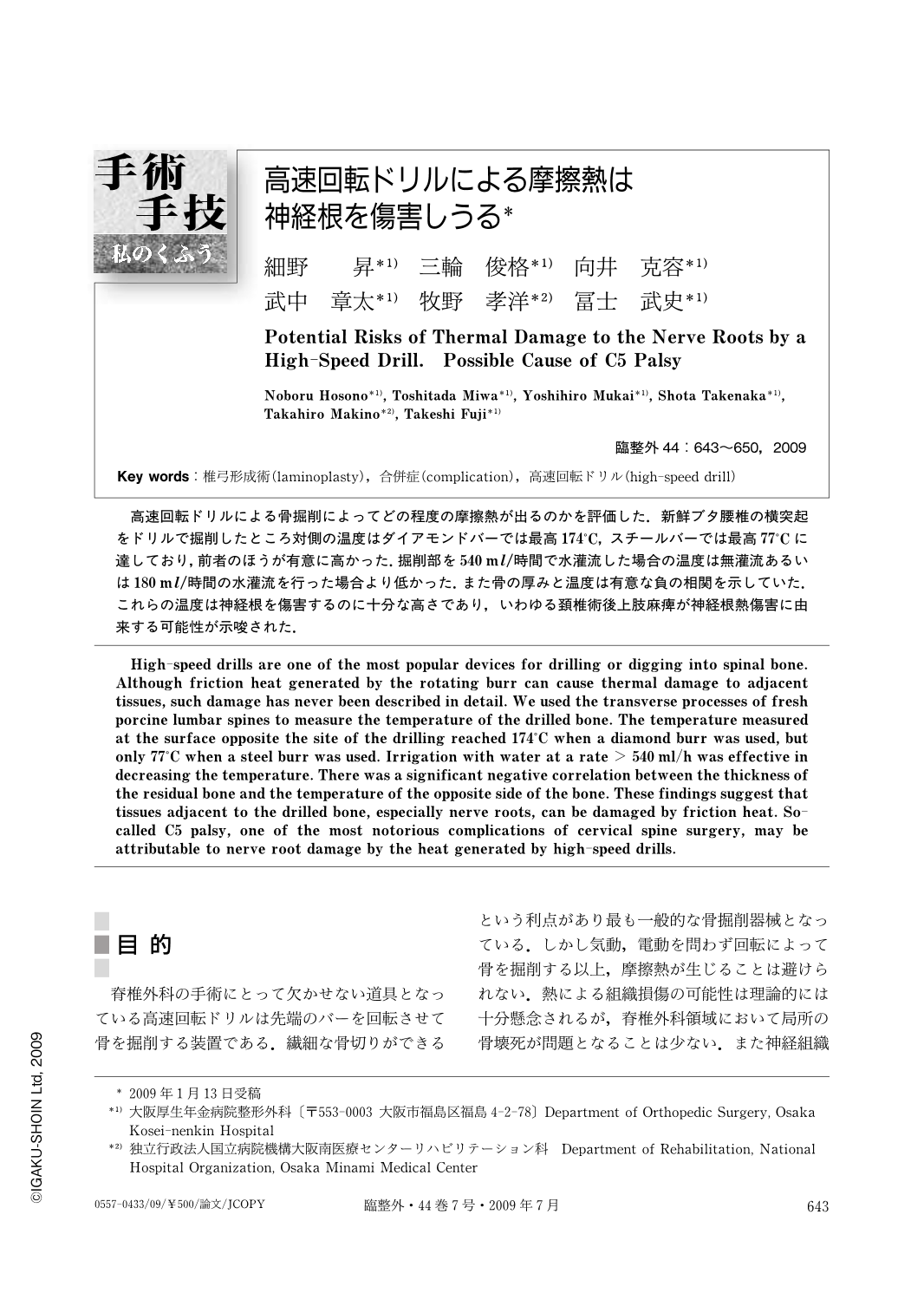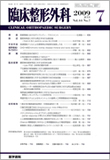Japanese
English
- 有料閲覧
- Abstract 文献概要
- 1ページ目 Look Inside
- 参考文献 Reference
高速回転ドリルによる骨掘削によってどの程度の摩擦熱が出るのかを評価した.新鮮ブタ腰椎の横突起をドリルで掘削したところ対側の温度はダイアモンドバーでは最高174℃,スチールバーでは最高77℃に達しており,前者のほうが有意に高かった.掘削部を540ml/時間で水灌流した場合の温度は無灌流あるいは180ml/時間の水灌流を行った場合より低かった.また骨の厚みと温度は有意な負の相関を示していた.これらの温度は神経根を傷害するのに十分な高さであり,いわゆる頚椎術後上肢麻痺が神経根熱傷害に由来する可能性が示唆された.
High-speed drills are one of the most popular devices for drilling or digging into spinal bone. Although friction heat generated by the rotating burr can cause thermal damage to adjacent tissues, such damage has never been described in detail. We used the transverse processes of fresh porcine lumbar spines to measure the temperature of the drilled bone. The temperature measured at the surface opposite the site of the drilling reached 174℃ when a diamond burr was used, but only 77℃ when a steel burr was used. Irrigation with water at a rate > 540ml/h was effective in decreasing the temperature. There was a significant negative correlation between the thickness of the residual bone and the temperature of the opposite side of the bone. These findings suggest that tissues adjacent to the drilled bone, especially nerve roots, can be damaged by friction heat. So-called C5 palsy, one of the most notorious complications of cervical spine surgery, may be attributable to nerve root damage by the heat generated by high-speed drills.

Copyright © 2009, Igaku-Shoin Ltd. All rights reserved.


